LG G5 modules reviewed: 360 CAM and CAM Plus
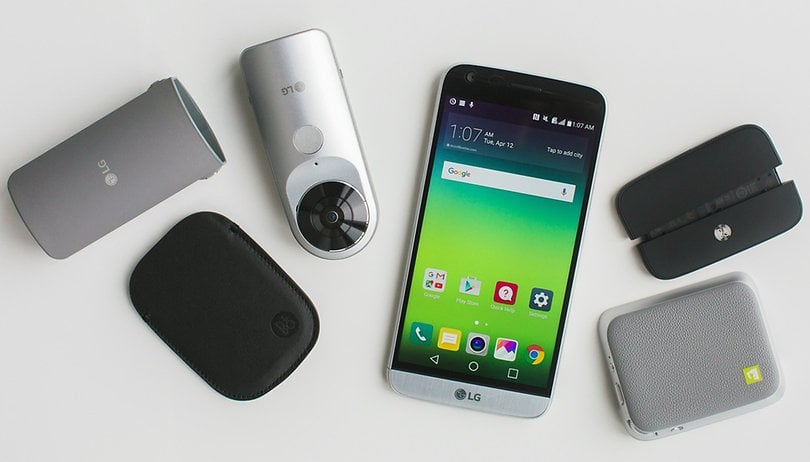

The LG G5 is one of our favorite phones to arrive this year but the smartphone itself is only part of the story. The LG G5 is available with a number of modules and accessories. Among them, the LG 360 CAM and the LG CAM Plus. We've taken both for a spin to see if they're worth the money. Read our thoughts below.
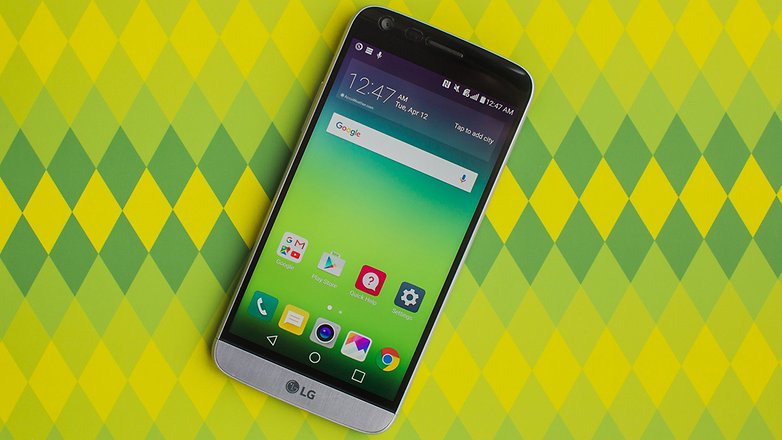
Skip to section:
LG 360 camera: the all-round camera for experimentation
Virtual worlds and 360-degree photos and videos are in this year. Almost the entire Android – and even Windows –world has plunged into VR and 360-degree content. But is the technology ready for the mass market? LG thinks so, and thus we have the LG 360 CAM, developed specifically for the LG G5.
LG's 360-degree camera follows a different path to its main competitor from Samsung. Instead of a ball design, LG has created a kind of oversized lipstick look.
Don't let that put you off, however, because the design is functional. Here LG uses this shell as a stand for the 360-degree camera, meaning you don't need to hold it – and thus have your hand in view – when taking pictures and videos (something I learned the hard way).
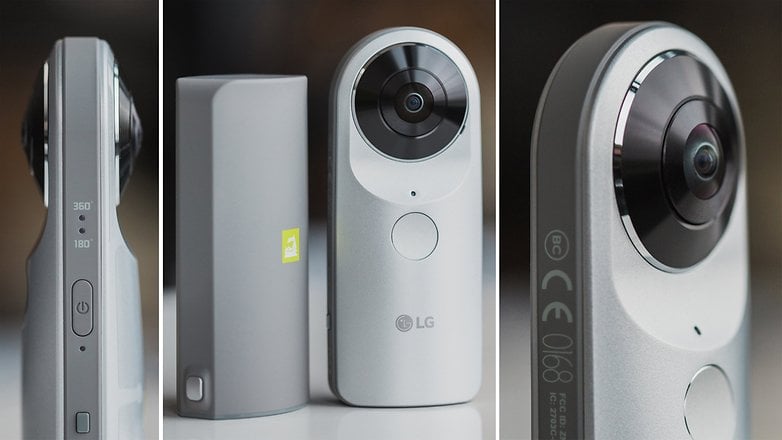
Take the cap off, you will notice that the actual camera comes with two lenses. Each creates a 180-degree image, which is combined to give the 360-degree image or video effect.
The device operation is simple because there are only two buttons: one for power, and one for the shutter (other settings are available in the 360 CAM manager app).
LG has built a standard tripod socket on the bottom side of the CAM 360, so you can screw the 360 CAM onto a conventional stand, should you wish to achieve a steadier shot.
In addition, this thread is protected by a flap, beneath which you will find the MicroSD card slot and the USB Type-C connector where the device is charged or connected to other devices.
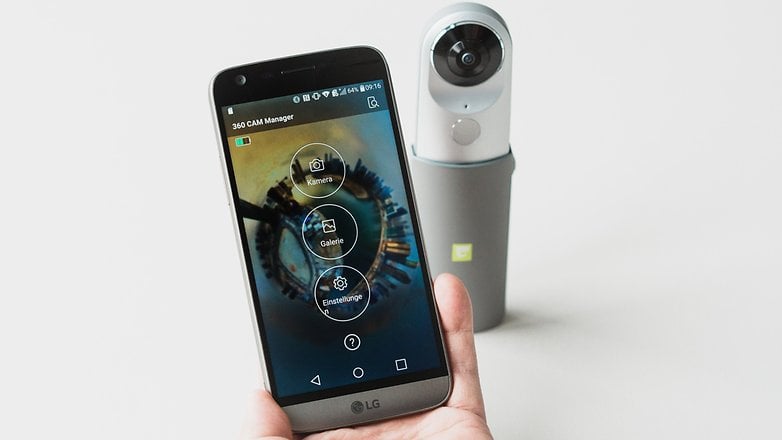
Setup and use
Setting up the camera is easy: install the dedicated app, connect the camera via Bluetooth and Wi-Fi (necessary for downloading your videos on images from the camera to your device) and you're ready to create your first 360-degree photo or video. You don't even need to turn on the camera manually: the Bluetooth connection can bring the camera out of standby itself.
Even during operation, the camera is designed to be very user-friendly. On the landing page, you can either jump into the gallery or jump into the camera mode: simple.
In the latter, there are numerous self-explanatory settings, like a button to switch between different recording modes, or between 180 and 360-degree recording modes. A manual mode is also included.
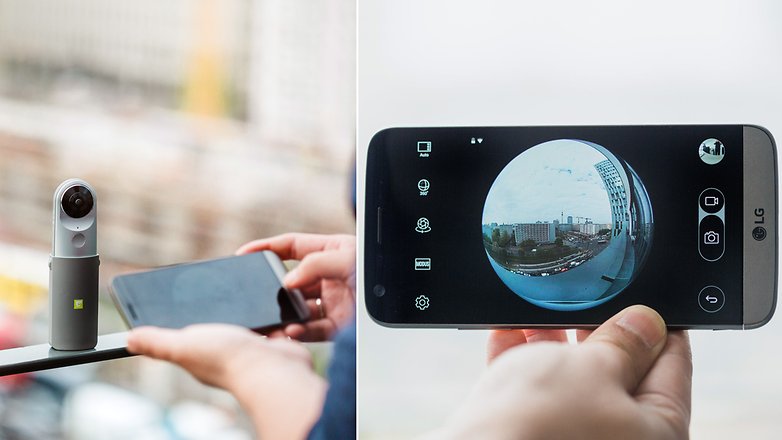
The quality of the recordings, either as a photo or video depends on the ambient light level. Although the camera takes photos with 5,660 x 2,830 pixels resolution, and records at 2K in video mode, in low light conditions, the camera captures produces a lot of noise. This is particularly apparent at the where two image sections are stitched together in 360 mode.
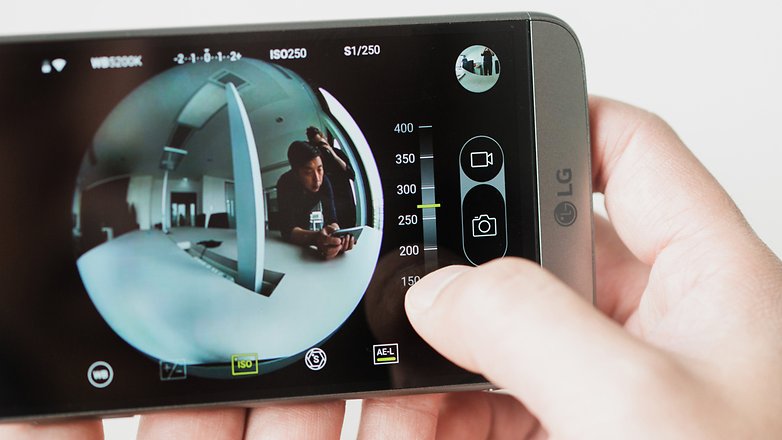
When the lighting conditions are favorable, then the image quality is okay, but obviously not as good as the camera already included on the LG G5 (though, of course, that's because it captures super wide images that the G5 can't). You can see an example of the video quality below.
And that's why I don't make videos... pic.twitter.com/Lj7Odk8Btw
— Scott Adam Gordon (@ScottAdamGordon) May 10, 2016
Sharing and obstacles
Quick and easy as it is to shoot photos and videos, the 360 CAM isn't without its obstacles. If you want to share your pictures with the world, via Twitter, Instagram and others, you'll discover there is no support for 360-degree photos and videos. Facebook, Google Photos, and YouTube do support such content, but the LG app is frequently unstable.
And so we come to the LG 360 CAM's biggest problem. During three separate trial periods, I had problems accessing data on the MicroSD card from the app. This began when trying to download files to the handset from the LG 360 CAM, but it often resulted in a completely severed connection between the camera and smartphone.
The only solution is to restart the smartphone or, if you don't need the camera anymore, transfer the files to a desktop computer. Either solution is inconvenient. Currently, this bug is a real deal-breaker, but there's every chance that LG will fix it in a firmware patch.
Conclusions
The LG 360 CAM is a cool tool for smartphone photographers and videographers. The 360-degree view provides more immersive views of a scene and it's easy to set up and use.
Disadvantages currently include the inability to share the generated video and photo content or embed it in your own blog (though that's not exactly LG's fault). And the error created by the gallery is not just annoying but actually breaks functionality. Since we are still at the beginning of the 360-degree revolution, these problems will likely be solved soon.
With the price set at $279, the LG 360 camera is not a bargain, but if you compare this to something like the GoPro Hero 4, then it's relatives inexpensive. It's also the first LG G5 addition which can be used with other devices.
All that being said, unless you really need this device, or $279 isn't a lot of money for you, I don't recommend it right now.
LG CAM Plus: An accessory for smartphone photographers?
Smartphones are increasingly replacing digital compact cameras. Why? We always have our smartphones in our pockets and their camera quality is increasingly impressive. What's more, photos can easily be shared and edited using a plethora of Android apps.
One key area where compact cameras are still superior (in some cases) is in the handling. Compact cameras often come with dedicated buttons specifically for camera operation. A zoom rocker for example, or physical shutter button.
Enter the LG CAM Plus.
Cumbersome installation
The LG CAM Plus plugs into the G5 via the magic slot at the bottom of the phone. Before this can be achieved, you must separate the G5 battery and plug it into the CAM Plus module. Preceding this, the phone should be switched off, of course.
Thus, it is within minutes that we arrive at the first stumbling block with this – and indeed all – LG G5 module accessories: they don't provide quick and easy operation.
Therefore, for those who will frequently switch between various modules, we recommend investing in a second battery.
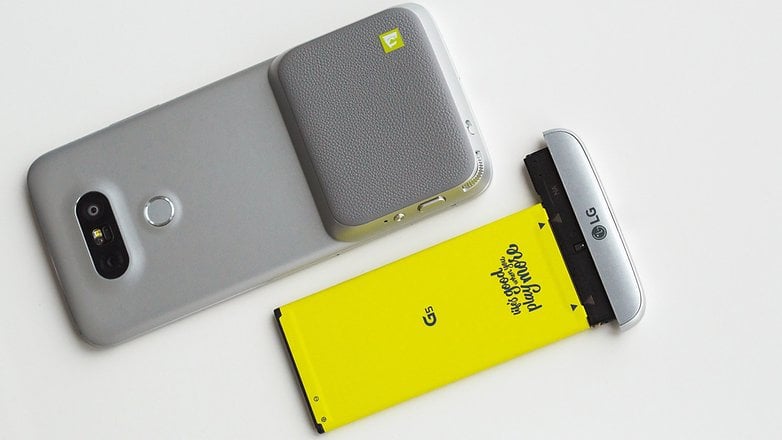
After restarting the G5 and inserting the CAM Plus module, it is necessary to open the LG Friends Manager app. This app is where you manage the various G5 modules and download additional software components.
Interestingly, you can't configure any part of the modules from within the app (or anywhere else). And it's a shame. Neither the CAM Plus buttons, nor the rotary knob, can be configured and I would have loved this flexibility.
Handling only half thought out
The CAM Plus aims to give users the comfort and functionality found on DSLRs or high-priced compact cameras. Unfortunately, the button layout isn't well thought out, and it feels both too wide and too flat.
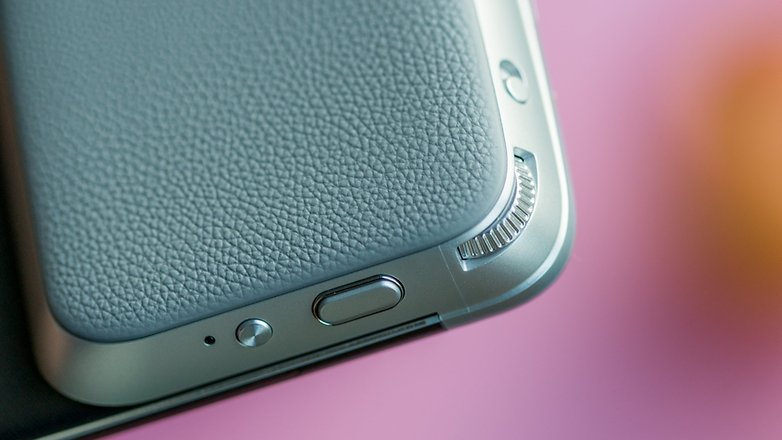
The actual photo-taking works in two stages. First, the image focuses as you hold the trigger button slightly, then only when it is fully depressed is the picture captured. Sadly, there is no continuous shooting mode.
Worse, the zoom wheel is only half thought out. While it makes sense to use the scroll wheel to control the zoom function, an end-point would feel much more pleasing. Instead, the wheel can be turned unendingly. The lack of a haptic feedback when controlling this just feels awkward.

In addition to the shutter button, there is a button used to start video recording. This is a handy feature but there is also a camera on/off switch on the side, which is almost useless.
It would have been smarter to use the photo shutter button to turn the camera on also. Instead of the on-off switch, it would have been better for LG to insert a tripod slot like on the CAM 360 module.
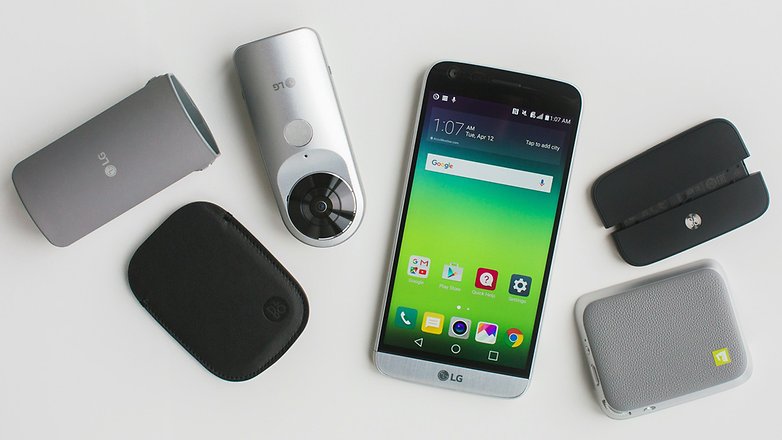
One sensible extra function of the CAM Plus module, however, is the extended battery life it provides. Inside that case is an extra 1,200 mAh of power, increasing device standby times when in a pinch.
LG CAM Plus Conclusion:
The idea of adding a camera grip to a smartphone isn't new. Unfortunately, the LG CAM Plus is still a disappointment. Either as an amateur or professional photographer or videographer, I can't see any reason why you would want this accessory.
I get the impression that LG either did not have enough time or simply received too little feedback when developing this module. Had it had more time to, then many of the inconsistencies could have easily been addressed. Unfortunately, I cannot recommend the LG CAM Plus.
Those are my thoughts, what are yours? Let me know in the comments.




















Pity. It looked pretty funky in the phone shop stand, like a... transformer phone, or something. Transphoner?
What about the DAC? You show it pictured but no mention of it.
Yeah we have one but it's not widely available -- not even sold in the US yet -- so we haven't covered it. Might check it out in the future or when LG release other sound modules for comparison.